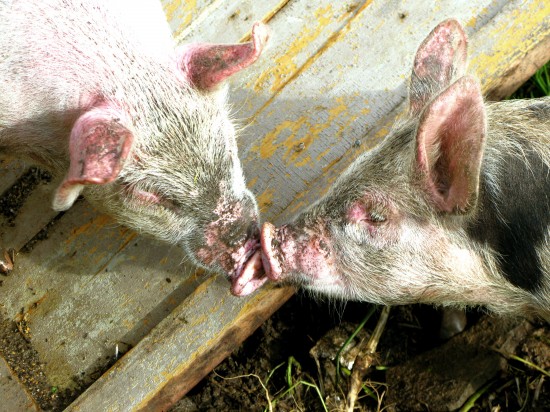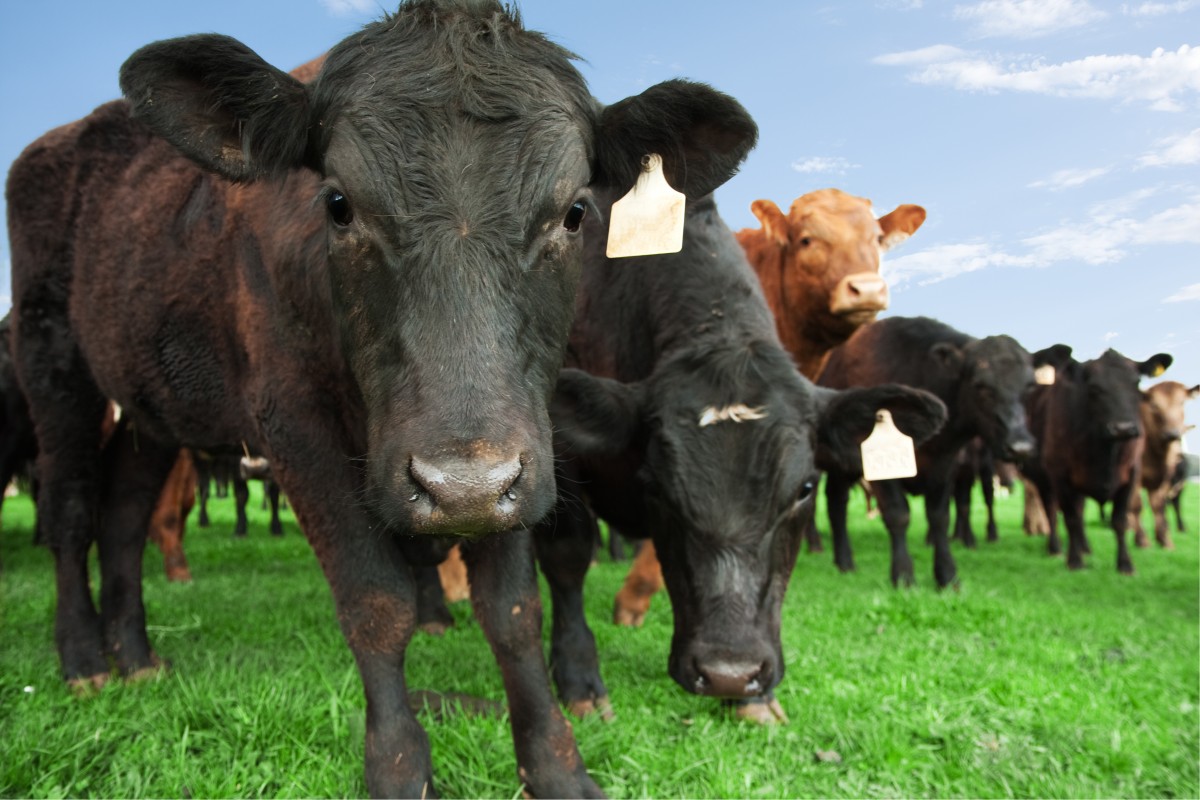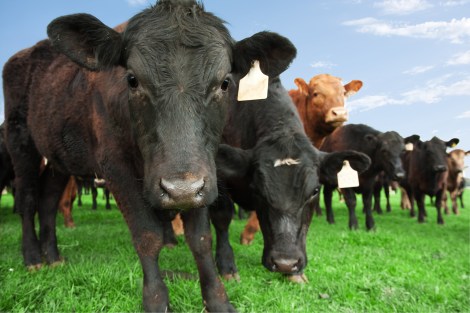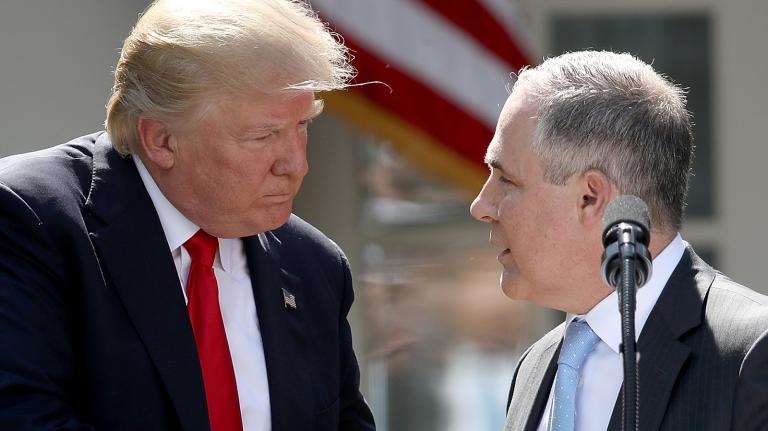After six weeks, on Feb. 12, my “I can eat meat if I want day” arrived. And I found I wasn’t ready to decide one way or the other.
So I tacked on six more weeks to my experiment, which means that if I want, I can eat meat around April 1. In the meantime, I have decided that if I do eat meat at that time, I will have to know how it lived and how it died.
That sounds so pretentious. It is also, I admit, the rare person who has the opportunity to do this. I live in a pretty wholesome part of the country — Nevada County, in northeastern California — and there is no end to the number of places I can go to get totally fresh, farm-raised meat from well-treated animals who have not been given a lot of antibiotics.
Still, you can hear about the wholesomeness of meat that comes from little farms, but it means nothing until you experience it. So last week I went out and visited two places. The first was a pasture belonging to Nevada County Free Range Beef, a 4,400-acre, 400-animal operation spread across various pieces of land in Nevada, Yuba, and Placer counties. After that I went to the farm of a good friend, who raises goats and chickens for personal use, and helped her slaughter two of her chickens.
Jim Gates, the 62-year-old owner of Nevada County Free Range Beef, drives a small white pickup with pro-beef bumper stickers. One of them says “The West Wasn’t Won on Salad,” which is probably true. He has an adorable little lab mix that goes everywhere with him and is the constant target of Gates’ affectionate deprecation — as in, “You think she’s a good dog? Do you? Well. She’s good for something. We just don’t know what it is yet.”
At around 10 a.m. on a really beautiful morning, we drove out to one of Gates’ pastures, somewhere in the vicinity of Rough and Ready, where Gates’ family has lived for several generations. The pickup was filled with hay, and Gates unloaded it into the pasture. About 15 cows — Black Angus and Red Angus and an English breed called White Parks that is naturally resistant to pink eye — came ambling up a gently sloping hill to eat.
When you find yourself in a pasture, you realize that the arguments about how animals use too much land are fallacious to some degree. This land is not meant to grow things on. It is, however, ideally suited to grazing. Is Gates using water? Of course. There are irrigation pipes up here, lots of them. Do these cows produce methane? Yes, they’re cows.
But you also see that there is a kind of functional ecosystem here — imperfect, with some human help, but an ecosystem nonetheless. Canada geese come to Gates’ farm and eat, he says, almost as much grass as the cows. Wild turkeys live on this land too. In the distance you can see the Sierra Foothills. I thought of all the different moments in my life when I had experienced commerce in action and decided this was one of the most idyllic.
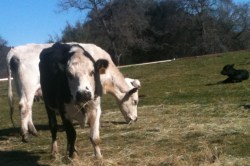
Happy cows on the Gates farm.
Gates’ cows live in paradise and are appropriately beautiful. They have light in their eyes, and rich, gleaming coats. After getting their fill of hay, a white calf and a black one plopped down and fell asleep in the warm sun, and some of the cows stopped eating the hay and went for the grass. Grass-fed cows eat hay (which is dried grass) in the winter and grass in the spring and summer. The grass is starting to come up just now, so soon Gates won’t have to supplement the animals’ diet with hay. He vaccinates them for black leg and pneumonia, but he doesn’t give them antibiotics unless something happens. For example, this summer, one of his cows was bitten by a snake, and he gave her penicillin. But she won’t be sold under his brand. Instead she will be sold at auction and processed as regular meat.
Gates is totally matter-of-fact about why he treats his animals so well. “Every stress I put on my animals comes through in the quality of my product,” he says. The rule of thumb for raising cattle, he says, is one cow per 10 acres.
As nice as life is here, these cows are being raised to die. Right now, Gates has to drive them about 100 miles up over the Donner Pass to Reno, the nearest slaughterhouse. Transport is very stressful for animals, but Gates mitigates this by going slow and taking only six or so cows per load. Larger outfits will pack the animals in so they arrive upset, Gates says, and sometimes, with broken bones.
Gates thinks they do all right by his animals in Reno, but he’d like to do better. He’s actively involved in trying to get a slaughterhouse built right here in Nevada County, and that way, he’d be able to kill his own cows with a high-powered rifle. “You do it with a silencer. That’s the way to do it. See that cow right there?” He points to a red cow, eating and completely at peace. “You do it and it’s just over, just like that.”
I like Jim Gates. I like his dog. I even like — and this is rare for me — his sneering distaste for the government of the state of California. I especially like how he keeps drawing graphs for me. One is about how you can only give animals so much space and make so much profit, but that he operates like this anyway because that’s how he likes to do it. Another shows how many people, as represented by a space in a triangle, stop buying his product as the price goes up. The last and best one is about how many people there are on the planet and how many resources and how there’s no way to feed everyone unless we take the kind of shortcuts he doesn’t have to take in his business. This, of course, is highly debatable. That said, Gates is probably right that, as rural as this region is and as low as its population density is relative to the rest of California, there’s not much more unlimited room for more free-range beef up here — and he feeds just a tiny fraction of this area’s residents.
When I asked him if it was hard to kill these animals, he told me a story about the time a huge fire came through this part of the county, which is lower and drier and hotter than the more mountainous part to the northeast. In the wake of the fire, he had to go out and shoot the cows that were slowly dying from burn injuries out in the field. He was 8 years old. “After something like that, you don’t think twice about it,” he said.
I drove away from that place thinking, shit, I don’t know. I would probably eat Nevada County Free Range Beef. Doesn’t really seem that bad to me. Which means that, maybe, that feeling I had about animal flesh and its sacred nature that got me to start this experiment in the first place is going away, or getting less present in my mind. Maybe I learned so much about how horrible raising animals can be that when I saw those sleek, healthy cows cavorting on one of the most beautiful pieces of land anywhere tended over by a feisty hardworking Californian with a cute dog, the whole death element of the meat industry kind of flew out of my mind. I think, like a lot of Americans, eating meat isn’t just about eating meat, it’s about believing in some idealized notion of farming, and I can’t imagine an experience more idealized than the one I had at Nevada County Free Range Beef.
Then I went to my friend’s house and watched her kill a chicken. Talk about an ideal place! First of all, my friend looks like fucking Heidi. She lives with her husband and brand new fat baby on a small farm just outside of town. When I pulled up to her house, she was wearing overalls and cutting brush. She is hearty and glowing with health and can feed goats and breastfeed at the same time. This is perhaps a bit of an exaggeration, but that’s what I saw so I’m sticking to it. We had some goat milk in her sunny kitchen, and then we went to kill some chickens.
She carried the chickens outside in a crate. They are a breed called Silkies, about four or five years old. Suuzi raises them because they make highly nutritious soup, purported in Chinese medicine to have healing properties, and also because they are very good mothers and will even mother chicks who don’t belong to them, and from other breeds.
Hung between two young trees in Suuzi’s backyard is an upside-down Nevada City municipal police department traffic cone. The chicken’s head goes in it and the feet stick up. Suuzi says that the chicken is calmed by being inside the cone and that seems like it might be true. She loads one in and it’s just kind of looking around, blinking. She grabs its neck and slits its throat, and blood begins to trickle out — not a lot but a steady stream. It fills up a bucket. It probably takes the chicken about 30 seconds to die. I don’t feel incapacitated by emotion watching this, but it’s definitely somewhat intense. I certainly wouldn’t have wanted to do the cutting myself. Still, the second chicken seems easier than the first one. Like, oh yeah, we know how to do this.
Suuzi thinks she’s killed about 50-60 chickens in her life, but she says it’s never become just a walk in the park. “Right before you do it, you kind of think, here it goes. I’m glad it’s over.”
Afterward they’re just lying there. Dead. “Five minutes ago they were in their pen flapping around, these lively, beautiful things, and now, they’re like, a commodity,” Suuzi says.
I help her to pluck the commodities. It is amazing to me that feathers on a chicken actually fit into these neat little holes. I mean, duh. But I am struck by how much the thing is a sort of perfectly assembled machine, and we are disassembling it. Then I watch as Suuzi cuts out the chicken’s intestines. There’s a black plastic bucket filled with white feathers and greenish tan entrails and feet and yellow fat. Suuzi puts everything in the compost. I am not going to talk about the circle of life here, because I don’t think the chicken would appreciate that.
I called Suuzi the next day to check some chicken facts, and it occurred to me to ask her when the Silkies would die on their own. She told me that by the time they were seven to 10 years of age, they would die of some kind of a disease. If she did not slaughter them and they got sick, they would be unusable as meat. If they were in the wild, at around that same age they would be snapped up by a predator. “So on a farm,” Suuzi says, “I am the predator.”
If an animal has a good life, I can’t say a quick death upsets me very much. And as far as raising livestock for agriculture from an environmental perspective, well, perhaps it’s not a good practice in every part of the world, but I can’t think of a better use for those 4,000 acres of land in and around Nevada County that Gates is using to graze cattle. I can’t think of a terribly good ideological reason not to eat the meat he or Suuzi produces.
Then I guess the question gets back to, do I think eating meat is just wrong, because it’s another being, and you’re not supposed to eat other beings? Where do I draw the line? Is it OK to eat cows because they die fast, and not OK to eat fish because they don’t?
Also: Yes, I can make the decision to eat only locally raised meat from farmers and farms I know. I can afford it. I live in a place where it is available. But most people can’t make that same choice. Considering all the people we have to feed on the planet, and the amount of space and resources we have, it doesn’t seem like there’s really such a thing as a sustainable way to raise meat, certainly not in many or most parts of the world.
But we can do it where I live. So do I just say screw it and call myself lucky? Is that what a good person does? Is it what I would do anyway even if I decided it wasn’t what a good person did — because I figured that I, as one little person, could bury my behavior easily in the crowd of imperfect global citizens?
I’m giving myself an extra six weeks of not eating meat not because I don’t want to eat it, but because I do. After I met with Gates, it was all I could do not to go get a package of Nevada County Free Range ground beef (a bargain in my eyes at $6.99 a pound), buy it, fry it up, and eat it on toasted wheat with mayonnaise and some expensive pickles. I didn’t.
A big part of me feels like being a vegetarian is the right thing to do. Another big part of me thinks that being vegetarian sucks enough I might convince myself I just don’t care. So I have a little more time to pick a winner.
